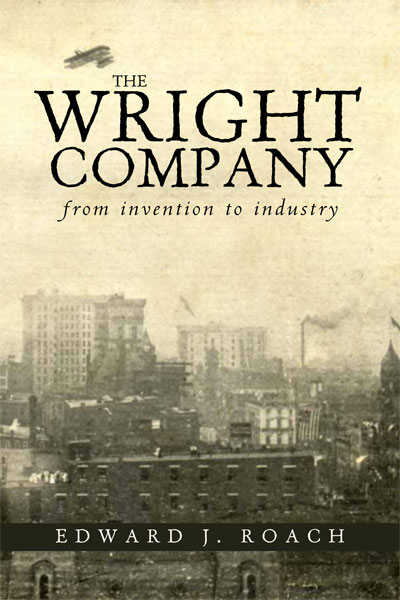 The Wright Company The Wright Company
From Invention to Industry
Edward J. Roach
Narrated by Pete Ferrand
Available from Audible
Book published by Ohio University Press
Fresh from successful flights before royalty in Europe, and soon after thrilling hundreds of thousands of people by flying around the Statue of Liberty, in the fall of 1909 Wilbur and Orville Wright decided the time was right to begin manufacturing their airplanes for sale. Backed by Wall Street tycoons, including August Belmont, Cornelius Vanderbilt III, and Andrew Freedman, the brothers formed the Wright Company. The Wright Company trained hundreds of early aviators at its flight schools, including Roy Brown, the Canadian pilot credited with shooting down Manfred von Richtofen — the “Red Baron”— during the First World War; and Hap Arnold, the commander of the U.S. Army Air Forces during the Second World War. Pilots with the company’s exhibition department thrilled crowds at events from Winnipeg to Boston, Corpus Christi to Colorado Springs. Cal Rodgers flew a Wright Company airplane in pursuit of the $50,000 Hearst Aviation Prize in 1911.
But all was not well in Dayton, a city that hummed with industry, producing cash registers, railroad cars, and many other products. The brothers found it hard to transition from running their own bicycle business to being corporate executives responsible for other people’s money. Their dogged pursuit of enforcement of their 1906 patent — especially against Glenn Curtiss and his company — helped hold back the development of the U.S. aviation industry. When Orville Wright sold the company in 1915, more than three years after his brother’s death, he was a comfortable man — but his company had built only 120 airplanes at its Dayton factory and Wright Company products were not in the U.S. arsenal as war continued in Europe.
Edward Roach provides a fascinating window into the legendary Wright Company, its place in Dayton, its management struggles, and its effects on early U.S. aviation.
Edward J. Roach is a historian at Dayton Aviation Heritage National Historical Park in Ohio.
REVIEWS:
“The book explores the one area of the career of the Wright brothers that remains least well known. It casts new light on the business career of the Wright brothers, and on the history of the Wright Company and the men who led it.… Taken as a whole, the book offers a concise and readable history of an important topic that has received all too little attention.”
—Tom D. Crouch, Senior Curator, Aeronautics, Smithsonian Institution, National Air and Space Museum “A well-researched and fascinating look into an often forgotten chapter in aviation history…. This detailed biographical, corporate, and industrial history is nicely illustrated with historical photos and advertisements.”
— Library Journal “This particular chapter in (the Wright’s) story hasn’t gotten as much press as their earlier, more daring exploits…. This book reveals the inner workings of the Wright Company and shows how their creation was being transformed, adapted, and improved in a surging aviation industry that was just beginning to take off…. (The Wright Company) contains fascinating bits of aviation history.”
—Dayton Daily News
|

